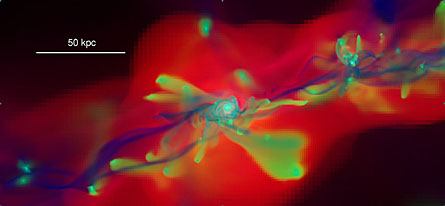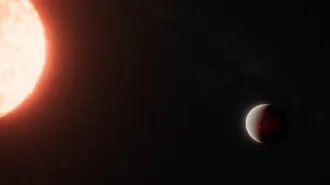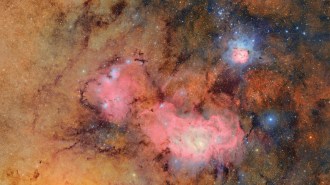View a video of galaxy formation in motion at the bottom of this article.

BLOIS, France — Like a proud papa showing off a picture of his newborn, cosmologist Ben Moore of the University of Zurich in Switzerland displayed an image of a galaxy that he says looks just like a newborn Milky Way. These days, with the sharp eye of Hubble and other telescopes, that may not sound like much of a feat. But the image Moore unveiled June 23 at the Windows on the Universe meeting was produced in a supercomputer and is the highest-resolution simulation ever attempted of a galaxy’s assembly.
Moore and his colleagues put in all the raw ingredients and detailed interactions that are generally agreed to be essential for galaxy formation. The simulation incorporates a halo of dark matter — the invisible material that provides the scaffolding for pulling together visible material — as well as hydrogen and helium gases and forces acting on these materials, such as shock waves from exploding stars.
“The complexity we find is very beautiful,” Moore says. As time unfolded, the simulation, which begins shortly after the Big Bang and ends when the universe is about 2 billion years old, produced a real-looking spiral galaxy, akin in mass and shape to a young Milky Way.
“For the first time we’ve resolved individual molecular clouds, the hot [dark matter] halo and cold streams of gas that travel like a river” along dark matter filaments into the center of the fledgling galaxy, Moore says. The cold gas turns out to be essential for forming the bulge of stars at the galaxy’s core.
The model isn’t perfect, Moore notes. It produces a stellar bulge that is about three times as massive as the Milky Way’s.
This movie models how a galaxy acquires most of its gas — the raw material for making stars. Red is hot gas, blue shows the cold streams of gas that flow like a river toward the galaxy’s center, and green shows gas that has been stripped out of satellite galaxies and enriched in metal content by supernova explosions. Credit: B. Moore, Oscar Agertz and Romain Teyssier/University of Zurich







